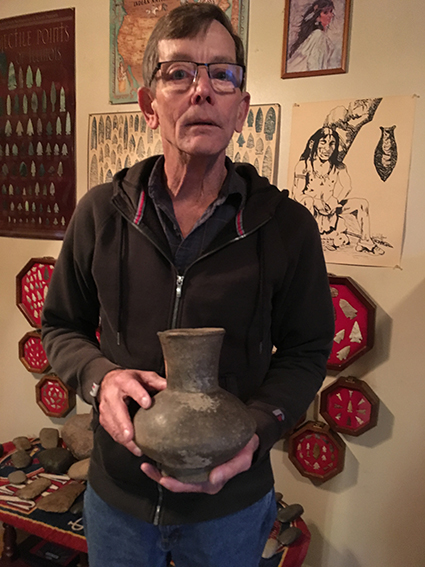Lovington Man’s Indian Pottery Collection Reveals Women’s Role

Photo by Ellen Ferrera
Fair displays a water jug from the Monk’s Mound in Cahokia. Small arrowheads on wall behind him.
•December 4, 2019•
By Ellen Ferrera
For the News Progress
Randy Fair’s grandmother was a full Cherokee Indian.
His grandfather had a drawer full of Indian axes and arrowheads that fascinated Randy at an early age. He believes that his love of collecting Illinois Indian artifacts was in his blood from the beginning.
It all began as a youth. “I was into hunting, fishing, trapping and finding Indian artifacts. In the 1980’s farmers were still deep plowing and I could find 20-25 pieces in a field a day. Now I’m lucky to find 2 or 3.”
Fair would spend at least 200 days a year walking the fields covering some 8 miles a day in search of arrowheads ancient clay trading pipes and other items.
Fair decided to specialize in the pottery of Illinois Indians from what is known as the Mississippian Era when Indians began to populate both sides of the Mississippi in Southern Illinois and the lower Ohio River valley.
The greatest settlement of this period from 700 AD to 1600AD was Cahokia Downs near St. Louis which, at its peak, had a population of 20,000.
The Native Americans chose the fertile flood plains to raise most of their food which consisted of maize, beans, pumpkins and squash.
They needed vessels in which to store and serve their food.
Login or Subscribe to read the rest of this story.
